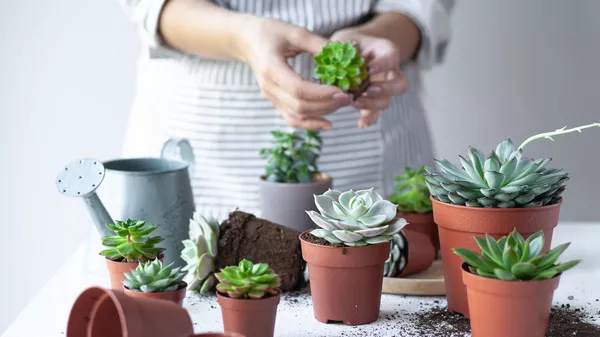Succulents have gained immense popularity as indoor and outdoor plants due to their unique beauty and relatively low maintenance requirements. Their ability to store water in their leaves makes them well-suited for various environments, but it’s crucial to strike the right balance when it comes to watering. Overwatering, a common mistake, can lead to detrimental effects on succulents’ health and appearance. In this guide, we will explore the signs of overwatering, the factors contributing to it, and essential care practices to ensure your succulents thrive.
Understanding Succulents’ Watering Needs
Succulents are renowned for their water-storing capabilities, allowing them to survive in arid conditions. Their leaves are adapted to retain moisture, enabling the plants to endure droughts. This unique feature, however, can also be a curse if not understood properly. Overwatering occurs when the frequency and amount of water provided surpass what the succulent requires. Unlike other plants, succulents prefer periods of dryness between watering to prevent root rot and maintain their overall health.
Signs of Overwatering
1. Yellowing and Dropping Leaves: One of the earliest signs of overwatering is the yellowing and dropping of leaves. The leaves might appear soft and translucent. This indicates that the plant is struggling to shed excess water, causing stress to the leaves and roots.
2. Soggy or Mushy Appearance: Overwatered succulents often develop a mushy, translucent appearance. Healthy succulents have firm, plump leaves. If the leaves feel squishy or waterlogged, it’s a clear sign of overwatering.
3. Edema: Edema appears as blisters, lesions, or corky bumps on the leaves. It occurs when the plant takes up water faster than it can transpire. These irregular growths can lead to long-term damage if the overwatering persists.
4. Stretched or Leggy Growth: When a succulent doesn’t receive enough sunlight due to overwatering, it might exhibit stretched or leggy growth as it tries to reach for more light. This weakens the plant’s structure and overall appearance.
5. Mold or Mildew: Excess moisture provides an ideal environment for mold and mildew growth. If you notice fuzzy or powdery substances on the leaves or soil surface, your succulent might be overwatered.
6. Foul Odor: Overwatering can lead to poor soil aeration, causing a foul odor to emanate from the soil. This smell indicates that the roots might be rotting due to excess moisture.
Factors Contributing to Overwatering
1. Inadequate Drainage: Planting succulents in containers without proper drainage holes prevents excess water from escaping, leading to waterlogged soil and root rot.
2. Improper Soil: Using regular potting soil that retains moisture instead of well-draining succulent soil can exacerbate overwatering.
3. Overly Large Containers: Planting succulents in containers much larger than their root system requires retains more moisture than the plant can utilize, increasing the risk of overwatering.
4. Frequency of Watering: Watering succulents too frequently, especially during cool or dormant periods, doesn’t allow the soil to dry out properly between watering.
5. Lack of Sunlight: Succulents need sufficient sunlight to dry out the soil between waterings. Insufficient light can lead to water accumulating in the soil.
Preventing and Treating Overwatered Succulents
1. Adjust Watering Frequency: Understand the specific needs of your succulent species. Allow the soil to dry out completely between waterings. Stick your finger into the soil to check its moisture level before deciding to water.
2. Use Well-Draining Soil: Choose or create a well-draining soil mix suitable for succulents. Adding sand, perlite, or pumice to regular potting soil can improve drainage.
3. Appropriate Containers: Select containers with drainage holes to ensure excess water can escape. If you have a container without drainage, be extra cautious with your watering routine.
4. Optimal Sunlight: Place your succulents in locations that receive adequate sunlight for at least a few hours a day. This helps dry out the soil and prevent overwatering.
5. Repot with Care: If you suspect root rot due to overwatering, carefully remove the succulent from the soil, trim affected roots, and allow them to dry before repotting in fresh soil.
Conclusion
Caring for succulents can be a rewarding experience, but it requires a keen understanding of their unique needs. Overwatering, a common mistake, can lead to a range of issues affecting the health and appearance of these plants. By paying attention to the signs of overwatering, adjusting watering practices, and ensuring proper drainage and sunlight, you can enjoy thriving and vibrant succulents that enhance the beauty of your living spaces. Remember, it’s better to err on the side of underwatering than overwatering when it comes to these resilient plants.


